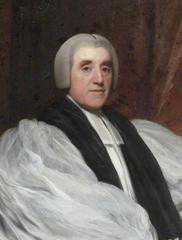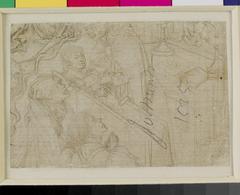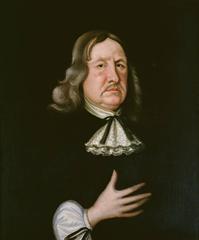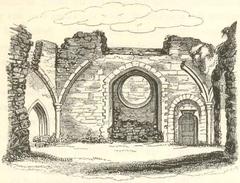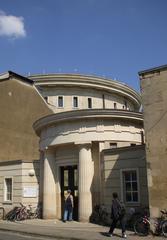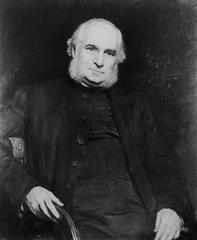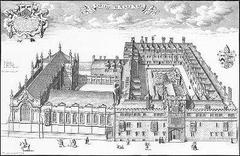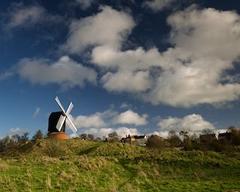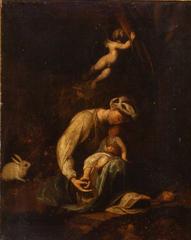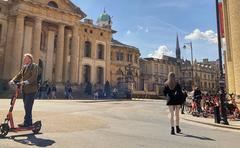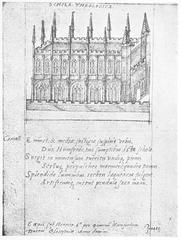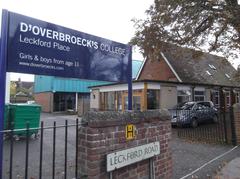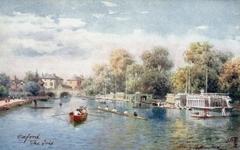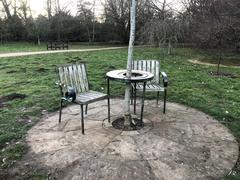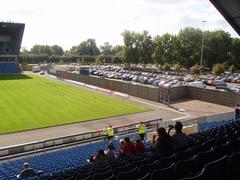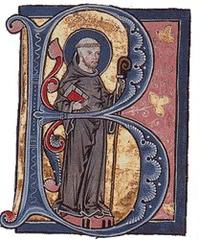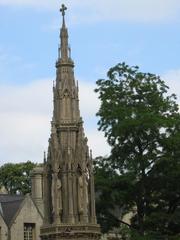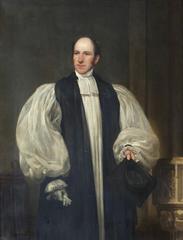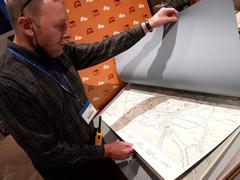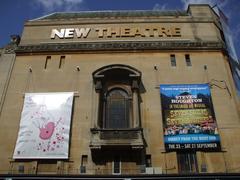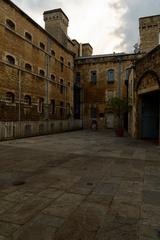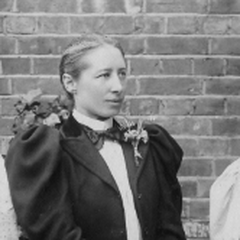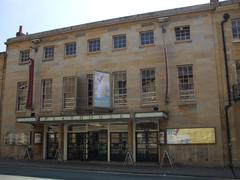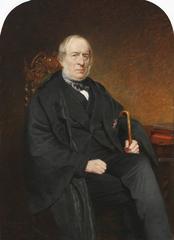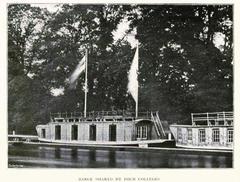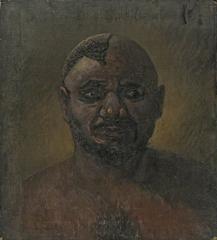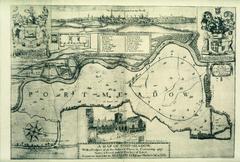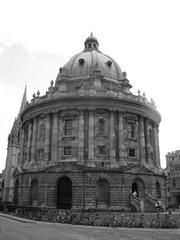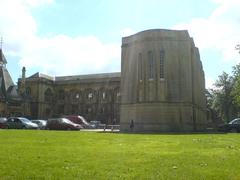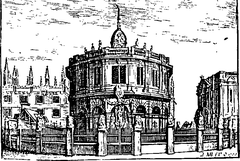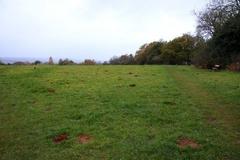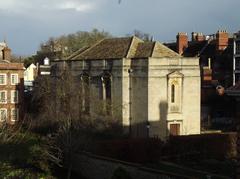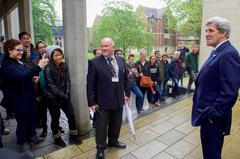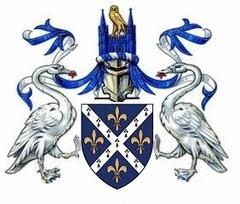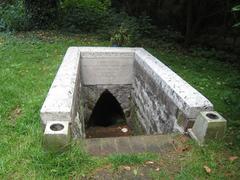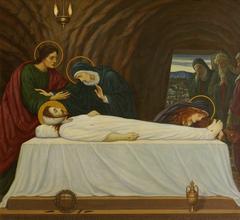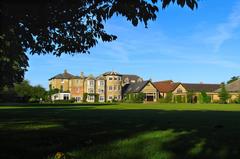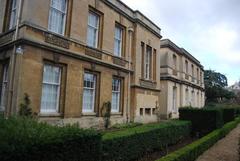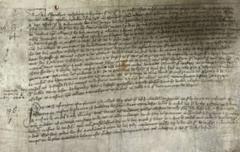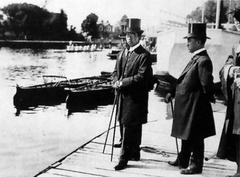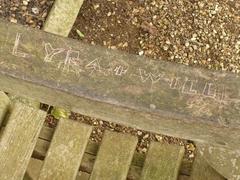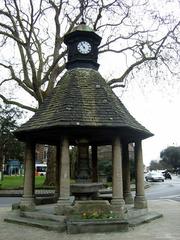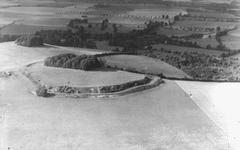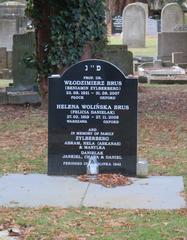Oxford Castle Motte: Visiting Hours, Tickets, and Historical Guide
Date: 14/06/2025
Introduction
Oxford Castle Motte is one of Oxford’s most iconic and historically significant landmarks. Spanning nearly a millennium, it offers a vivid journey through the evolution of English architecture, power, and justice. From its establishment in the wake of the Norman Conquest to its later role as a county prison, Oxford Castle has witnessed pivotal moments in British history. Today, it stands as a well-preserved Scheduled Monument and Grade I listed building, blending medieval intrigue and modern visitor experiences. This guide provides comprehensive information on visiting Oxford Castle Motte, including history, ticketing, hours, accessibility, and travel tips to help you plan an enriching visit (History Tools; Oxford Castle & Prison; Art Facts).
Contents
- Norman Foundations and Early Construction
- The D’Oyly Family and Royal Connections
- Architectural Evolution: From Wood to Stone
- The Anarchy and Medieval Significance
- Expansion and Decline
- Civil War and Transformation into a Prison
- Victorian Rebuilding and Modern Decline
- Heritage Status and Contemporary Use
- Visiting Oxford Castle: Hours, Tickets, and Accessibility
- Key Attractions and Activities
- Travel Tips and Nearby Attractions
- Frequently Asked Questions (FAQ)
- Conclusion and Summary
- Sources
Norman Foundations and Early Construction
Construction of Oxford Castle Motte began in 1071 under the direction of William the Conqueror and his baron, Robert D’Oyly. Built as a classic motte-and-bailey structure on the western edge of the Saxon burh, it utilized the River Thames and the Castle Mill Stream as natural defensive features. The large earth mound (motte), approximately 60 feet high, was originally topped with a wooden keep, while the bailey was enclosed by wooden palisades (History Tools; Art Facts).
The D’Oyly Family and Royal Connections
Though a royal possession, Oxford Castle was administered by the D’Oyly family, hereditary constables who shaped its early development. Their stewardship cemented the castle’s role as a regional power center, even as Norman kings favored nearby Beaumont Castle (Oxfordshire Live).
Architectural Evolution: From Wood to Stone
By the 12th century, the castle’s wooden structures were replaced with stone fortifications, including a ten-sided shell keep and robust curtain walls. St. George’s Tower, possibly of Saxon origin, became a central defensive feature. A moated barbican was added in the 13th century, illustrating the continuous adaptation of the site’s defenses (Art Facts).
The Anarchy and Medieval Significance
During The Anarchy (1135–1153), Oxford Castle served as a royal stronghold for Empress Matilda, who famously escaped a siege by King Stephen in 1142, allegedly disguised in white to blend with the snow. The castle’s St. George’s Chapel became a collegiate church, attracting scholars such as Geoffrey of Monmouth (History Tools).
Expansion and Decline
The castle saw continued investment in the 13th and 14th centuries, with Henry III and Edward III funding repairs and expansions. Yet, as military technology advanced, its defensive importance waned, and its function shifted to administration and justice, housing courts and serving as the county gaol (Art Facts).
Civil War and Transformation into a Prison
The English Civil War brought destruction but marked the castle’s transition from fortress to prison. From the mid-17th century until 1996, it housed prisoners in increasingly modernized facilities. Notably, the prison was notorious for harsh conditions and historical executions, such as that of Mary Blandy in 1752 (History Tools; Art Facts).
Victorian Rebuilding and Modern Decline
Major renovations, led by architect William Blackburn between 1785 and 1805, improved conditions and expanded the prison. Additional buildings, including County Hall and the Militia Armoury, were added in the 19th century. The prison operated until its closure in 1996, after which the site underwent restoration (Art Facts).
Heritage Status and Contemporary Use
Now a Scheduled Monument and Grade I listed building, Oxford Castle Motte is a vibrant visitor attraction. Restoration efforts have preserved its historic features, enabling guided tours, interactive exhibits, and even overnight stays in the boutique Malmaison Oxford hotel, situated in former prison cells (History Tools).
Visiting Oxford Castle: Hours, Tickets, and Accessibility
- Opening Hours: Daily, 10:00 AM–5:00 PM (last admission at 4:00 PM). Seasonal variations may apply; check the official Oxford Castle website before your visit.
- Tickets: Purchase online or on-site. Adult tickets start at £12, with discounts for children, seniors, and families. Guided tours are included.
- Accessibility: Main exhibitions and facilities are accessible; however, the historic motte and tower require climbing steep stairs and may not be suitable for those with limited mobility.
- Getting There: Located centrally at 44-46 Oxford Castle, Oxford OX1 1AY, easily reached by public transport or car (Westgate Shopping Centre car park nearby).
Key Attractions and Activities
St George’s Tower: Climb 101 spiral steps for panoramic views over Oxford. Not suitable for children under 5 or those with mobility challenges.
Castle Mound (Motte): Climb the Norman earthwork for city views; access may be weather-dependent.
The Crypt: Experience the atmospheric, candle-lit medieval crypt on a guided tour.
Prison Cells and Exhibits: Explore preserved 18th-century cells and learn about the castle’s penal history through interactive displays.
Special Events: The castle offers themed tours and activities, such as Spectre Ghost Tours and the Jailbreak Escape Room. See the official events calendar for details.
Travel Tips and Nearby Attractions
- Arrive Early: Arrive 10–15 minutes before your tour.
- Weather: Outdoor features may close during inclement weather.
- Combine Your Visit: Nearby attractions include the Bodleian Library, Radcliffe Camera, and Oxford University Botanic Garden.
- Refreshments: While there is no café onsite, the adjacent Oxford Castle Quarter offers multiple dining options.
Frequently Asked Questions (FAQ)
Q: What are Oxford Castle’s opening hours?
A: 10:00 AM–5:00 PM daily, last admission at 4:00 PM. Confirm on the official website for seasonal changes.
Q: How do I buy tickets?
A: Tickets are available online (recommended for discounts and timeslot selection) or at the venue.
Q: Is the castle accessible?
A: Ground-floor areas are accessible, but the tower and motte require stair climbing.
Q: Are guided tours available?
A: Yes, guided tours—often with costumed interpreters—are included in the ticket price.
Q: Can I stay overnight?
A: Yes, the Malmaison Oxford hotel occupies part of the former prison.
Q: Are there family-friendly activities?
A: Yes, interactive exhibits and themed events cater to families.
Conclusion and Summary
Oxford Castle Motte encapsulates the rich tapestry of England’s past—from Norman conquest and royal intrigue to penal reform and contemporary heritage tourism. With its impressive surviving structures, immersive guided tours, and central location, it is a must-visit for anyone interested in history, architecture, or culture. Plan your visit by booking tickets in advance, checking current visiting hours, and exploring nearby Oxford attractions for a memorable day in the city.
Don’t forget to download the Audiala app for audio guides and the latest updates, and follow us on social media for news on special events and offers.
Sources
- History Tools: The Dark Past and Intriguing Present of Oxford Castle Prison, 2024
- Art Facts: Facts About Oxford Castle, 2024
- Oxfordshire Live: Who Originally Built Oxford Castle?, 2024
- Oxford Castle & Prison Official Website, 2025
